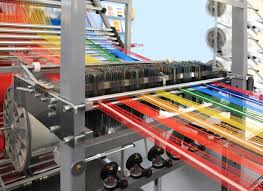An overvalued rupee has been one of the major contentions of textile exporters in Pakistan. The recent 5 percent currency depreciation has been welcomed by the industry which hopes this will bring some measure of relief to the beleaguered textile sector.
Already being faced with a high cost of doing business, which in some cases is almost 30 percent higher than regional competitors, Bangladesh and Vietnam, Pakistan textile exports have been losing share in the international market.
Pakistan's real effective exchange rate (REER) has appreciated by over 20 percent between June 2013 - 2017. On the other hand currencies of other countries have actually depreciated their currency to make exports even more competitive. Some textile players believe the export value fell by almost 8 percent due to the impact of the exchange rate in recent years.
This round of depreciation took place in the second week of Dec ember, 2017 so the full impact will be revealed in January-18 numbers that will be published next month. However, channel checks suggest that there is already an increase in orders from foreign buyers since depreciation of the currency took place.
There is still room for the rupee to devalue further but as this column has advocated it should be done in a gradual manner. However, critics believe that devaluation will result in increasing the already high cost of doing business by making imported raw materials and energy tariffs more expensive. But again, this can only be gauged when the numbers come in from next month.
But depreciation is only one part of the problem. The shift of global consumer preferences towards synthetic based fibres is also proving to be a factor in the fall in textile exports. Pakistan produces pre-dominantly cotton based products and even in that has to rely on imports to procure better qualities. So, no matter how much of an edge depreciation provides in the long run, the increase in value addition with better fabrics has to take place eventually.
























Comments
Comments are closed.